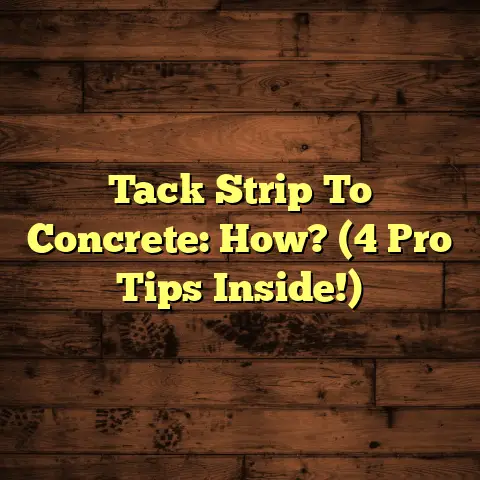Protect Hardwood From Office Chairs? (3 Fixes!)
Let me tell you a story that really hit home.
I remember this tech company – young, hip, and ready to disrupt the world.
They decided to ditch the drab cubicles and go for a super modern open office.
Think exposed brick, lots of natural light, and gorgeous, gleaming hardwood floors.
Everyone was thrilled, the place looked amazing, and it felt like a real upgrade.
But the honeymoon didn’t last long.
Within weeks, they started noticing something…scratches. Little ones at first.
Then deeper grooves, dull spots, all thanks to those darn office chairs rolling around.
What started as a dream office quickly turned into a maintenance nightmare!
The cost to repair and refinish those floors was astronomical, and employee morale?
Well, let’s just say it took a nosedive.
This story, believe me, isn’t unique.
It perfectly illustrates why protecting your hardwood floors from office chairs
is absolutely crucial. It’s not just about aesthetics; it’s about long-term costs
and creating a positive work environment.
Section 1: Understanding the Importance
of Protecting Hardwood Floors
Aesthetic and Monetary Value
Hardwood floors are a major investment.
I’ve seen them transform spaces, adding warmth, character, and a touch of class.
But they’re also a significant financial asset. According to the National Wood
Flooring Association, hardwood floors can increase a home’s resale value by up
to 2.5%. In an office setting, they project professionalism and attention to detail.
The Office Chair Menace
Office chairs, while essential for comfort and productivity, are hardwood’s nemesis.
Every roll, swivel, and scoot grinds against the floor’s surface, causing scratches, dents,
and wear. The weight of the chair and the person sitting in it concentrates pressure
on small areas, exacerbating the damage.
It’s like slowly sanding your floors away.
The Cold Hard Facts
You might think, “It can’t be that bad, right?”
Wrong. A study by the International Facility Management Association (IFMA)
found that flooring damage is one of the most common maintenance issues in office
buildings, with a significant portion attributed to office chair use. I’ve seen
firsthand offices where the cost of floor repairs exceeded the initial flooring
investment within just a few years.
Section 2: The Consequences of
Ignoring Flooring Protection
The Long-Term Ripple Effect
Ignoring floor protection isn’t a short-term problem; it has lasting and costly effects.
Over time, scratches and dents accumulate, requiring costly repairs or even replacement.
Refinishing an entire office floor can be incredibly disruptive, impacting productivity
and requiring temporary relocation of staff.
And let’s not forget the hit to your wallet!
Horror Stories From the Trenches
I once consulted with a law firm that had completely neglected floor protection.
Their beautiful oak floors were so damaged that they had to be completely replaced.
The cost? Over $50,000, plus the cost of temporary office space during the renovation.
They learned a very expensive lesson about the importance of protecting their investment.
Safety First
Beyond aesthetics and cost, damaged floors can pose safety hazards. Uneven surfaces
and loose flooring can create tripping hazards, leading to accidents and injuries.
The last thing you want is a worker’s comp claim because someone tripped over a gouge
caused by an office chair. It’s simply not worth the risk.
Section 3: Fix #1 – Chair Mats:
The Unsung Heroes of Floor Protection
What Are Chair Mats?
Chair mats are flat, rigid or semi-rigid mats designed to protect flooring from
the wear and tear of office chairs. They act as a barrier between the chair wheels
and the floor, distributing weight and reducing friction. Think of them as tiny,
personal shields for your hardwood floors.
Types of Chair Mats
-
Polycarbonate: These are the gold standard. They’re incredibly durable, resistant to cracking, and offer excellent clarity, allowing the beauty of your hardwood to shine through. They’re also the most expensive.
-
Vinyl: A more budget-friendly option, vinyl mats are still effective but less durable than polycarbonate. They can crack or curl over time, especially in high-traffic areas.
-
Tempered Glass: For a modern look, tempered glass chair mats offer superior durability and a sleek aesthetic. They are scratch-resistant and can support heavy weights, but are also the priciest option.
Choosing the Right Mat
-
Thickness: For hardwood floors, I recommend a mat that’s at least 0.2 inches thick. This provides ample protection without being too bulky.
-
Size: Measure the area you typically move your chair within. You want a mat that extends beyond your reach to ensure full coverage.
-
Material: Consider your budget and the level of protection you need. Polycarbonate is the best overall choice, while vinyl is a good option for lighter use.
Real-World Success
I worked with a marketing agency that was experiencing significant floor damage in
their creative department. After installing polycarbonate chair mats, they saw a dramatic
reduction in scratches and dents. The floors looked better, and they saved thousands of
dollars in potential repair costs. It was a win-win.
Section 4: Fix #2 – Felt Pads:
A Simple Yet Effective Solution
Felt Pads: The Silent Protectors
Felt pads are small, adhesive-backed pads that attach to the bottom of chair legs or
wheels. They create a soft barrier between the chair and the floor, preventing scratches
and reducing noise. They’re a simple, inexpensive way to protect your hardwood.
Choosing the Right Felt Pads
-
Thickness: Go for thicker pads, at least 1/4 inch, for better cushioning and durability.
-
Adhesive Strength: Make sure the adhesive is strong enough to withstand constant movement. Look for pads with industrial-strength adhesive.
-
Durability: Opt for high-density felt that won’t flatten or wear out quickly. Replace the pads regularly to maintain their effectiveness.
DIY Application
-
Clean the bottom of the chair legs or wheels with rubbing alcohol to remove any dirt or grime.
-
Peel off the backing from the felt pad.
-
Carefully center the pad on the bottom of the leg or wheel.
-
Press firmly for several seconds to ensure a secure bond.
A Personal Touch
I’ve personally used felt pads on my own office chairs at home, and I’ve been amazed
at the difference they make. No more scratches, no more annoying scraping sounds.
It’s a small investment that provides big peace of mind.
Section 5: Fix #3 – Choosing the
Right Office Chair
Chair Design Matters
The type of office chair you choose can significantly impact the health of your
hardwood floors. Chairs designed specifically for hardwood floors can minimize damage.
Features to Look For
-
Wheel Type: Opt for chairs with soft, rubberized wheels designed for hardwood floors. These wheels are gentler on the surface and less likely to cause scratches.
-
Weight Distribution: Chairs with a wider base and even weight distribution can reduce pressure on specific areas of the floor.
-
Materials: Avoid chairs with hard plastic or metal components that can come into direct contact with the floor.
Chair Comparison
| Model | Wheel Type | Pros | Cons |
|---|---|---|---|
| Herman Miller Aeron | Soft Casters | Excellent ergonomics, durable, hardwood-friendly wheels | Expensive |
| Steelcase Gesture | Soft Casters | Highly adjustable, comfortable, designed for various postures | Pricey |
| Branch Ergonomic Chair | Soft Casters | Affordable, ergonomic, good for smaller spaces | May not be as durable as higher-end models |
| HON Exposure Mesh Task Chair | Hard Casters (Replaceable) | Budget-friendly, breathable mesh back | Requires replacing casters with soft wheels for hardwood protection |
Expert Insights
Ergonomic experts emphasize the importance of choosing a chair that not only supports
your body but also protects your workspace. A well-designed chair can improve posture,
reduce strain, and prevent floor damage. It’s a holistic approach to workplace wellness.
Section 6: Bonus Tips for Maintaining
Hardwood Floors in an Office Environment
Regular Cleaning Routines
Sweep or vacuum your hardwood floors regularly to remove dirt, dust, and debris
that can scratch the surface. Use a soft- bristled brush or a vacuum with a hardwood
floor attachment. Avoid using harsh chemicals or abrasive cleaners that can damage the finish.
Humidity Control
Maintain a consistent humidity level in your office to prevent hardwood floors
from expanding or contracting. Use a humidifier or dehumidifier as needed to
keep the humidity between 30% and 50%.
Periodic Inspections
Regularly inspect your chairs and flooring for signs of wear and tear. Replace worn
felt pads, tighten loose chair components, and address any minor floor damage promptly
to prevent it from escalating.
Conclusion: The Lasting Impact of
Protecting Your Floors
Protecting your hardwood floors from office chairs is an investment in your workspace.
It’s about preserving the aesthetic appeal, maintaining the monetary value, and creating
a safe and comfortable environment for your employees. By taking proactive measures,
you can avoid costly repairs, reduce downtime, and enhance the overall quality of your office.
Don’t wait until the damage is done. Evaluate your current flooring protection methods and
consider the fixes discussed in this article. Your hardwood floors – and your bottom line –
will thank you for it. It’s not just about floors; it’s about creating a space where
people can thrive. Now, go protect those beautiful floors!





